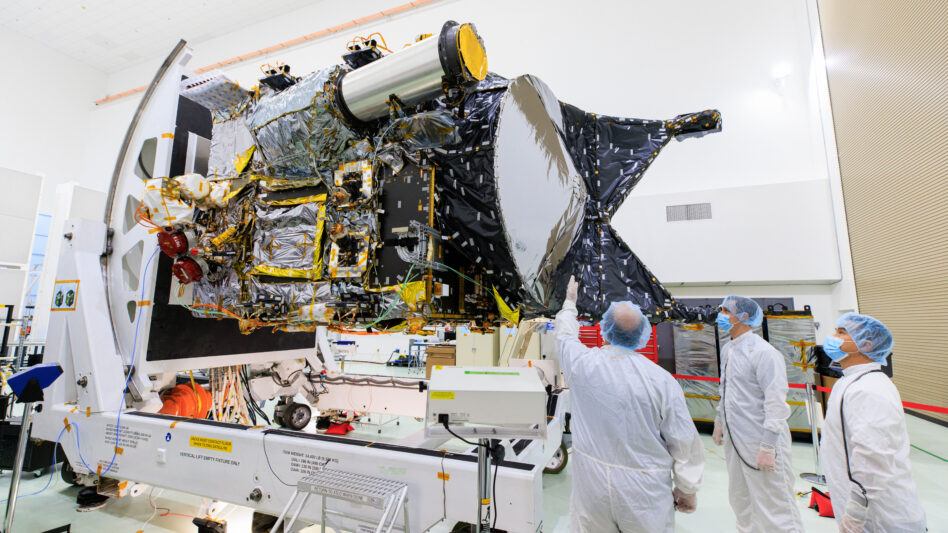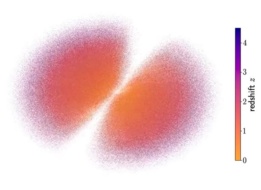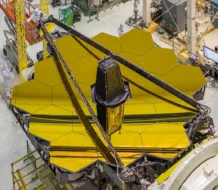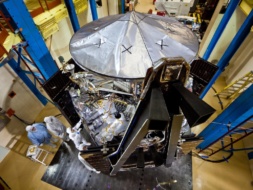As companies and government agencies push deeper into space, their spacecraft need to transmit large amounts of data very precisely and quickly across vast distances in the void of space—and radio comms just aren’t doing the trick anymore.
That’s where lasers (or, to use the industry terminology, optical communications) come in. Future crewed missions to the Moon and Mars will require astronauts to send large volumes of data back and forth from Earth, and lasers can potentially carry much more information than radio at the speed of light.
NASA’s testing it out. An experiment riding along with the Psyche mission to the eponymous asteroid has recently achieved “first light,” i.e., sent its first transmission to Earth. The instrument, called the Deep Space Optical Communications (DSOC) experiment, successfully broke the distance record for delivering a message via laser, and it’s still got quite a journey ahead.
Where we come from: To date, when NASA and other space agencies have launched deep space missions, they’ve transmitted their findings back home via radio frequency. That goes for everything from lunar landers to the Voyager 1 and 2 probes, which have been outside the technical boundaries of the solar system and flying through interstellar space for more than a decade now. The Psyche probe itself is using RF to send its data home.
Deep space missions communicate with Earth primarily through the Deep Space Network (DSN), a network of antennas in Australia, California, and Spain operated by NASA. This has a few limitations:
- The DSN is running up against capacity limitations, and may not be able to support all the science missions planned for the coming years.
- Radio frequencies are remarkably low compared to laser by a factor of ~100,000, meaning they can’t carry nearly as much information in the same amount of time.
The demonstration: NASA assigned the DSOC experiment to piggyback on the Psyche mission to see if laser communication may be a good choice to support future missions to Mars. After all, when the agency puts humans on the Red Planet, it’s definitely going to want to stream hi-def video back to Earth.
On Nov. 14, DSOC locked onto a signal coming from a NASA Jet Propulsion Laboratory beam. It then sent a predetermined test message via laser to a receiver in California from more than 10M miles away from Earth, farther than any laser message ever sent. It took ~50 seconds to travel that distance.
Where we’re headed: Optical communication has the potential to transform the way astronomers approach the design and execution of deep space science missions, as well as the safety and scope of crewed missions beyond Earth’s orbit.
“Optical communication is a boon for scientists and researchers who always want more from their space missions, and will enable human exploration of deep space,” said Jason Mitchell, director of NASA’s Advanced Communications and Navigation Technologies Division, in a blog post. “More data means more discoveries.”
DSOC isn’t the only instrument being used to test the new waters of laser communications across space. The technology is gaining steam for constellation operators closer to Earth for its innate higher security compared to radio, since the beam is so narrow and can be directed more precisely, and for its high speed. The DoD’s Space Development Agency is using laser links for its defense infrastructure, and Starlink’s next generation will do the same for broadband connectivity.
What’s next with DSOC? The little laser experiment has quite a ways to travel, and as it gets farther from Earth, it will continue sending messages home. The team back in California will keep fine-tuning the beam and seeing just how far it can send messages. At its farthest point, it will take 20 minutes for the data to travel home.




